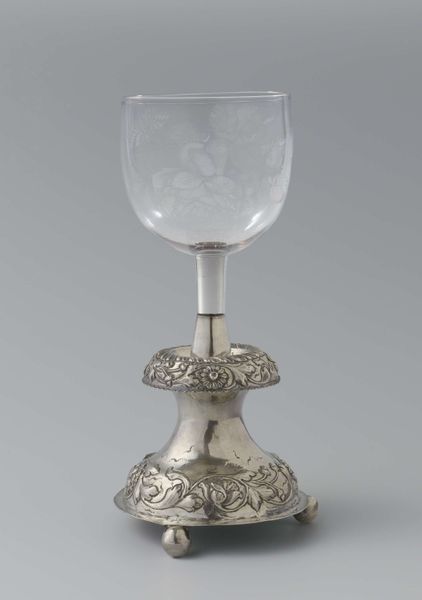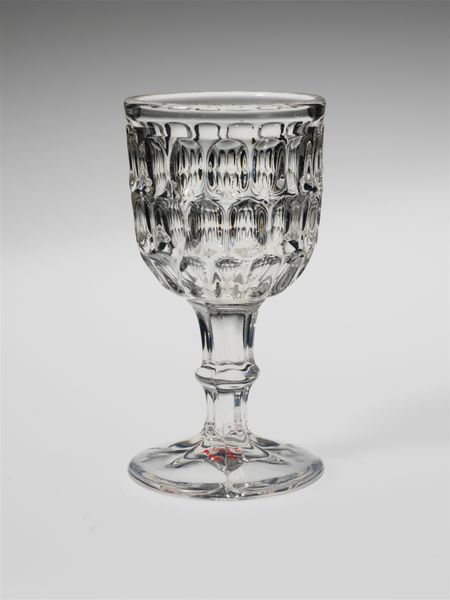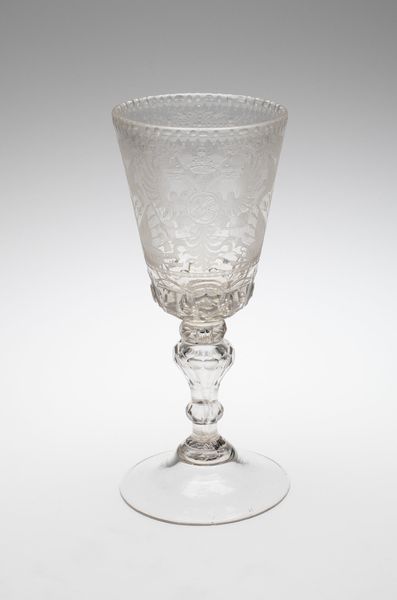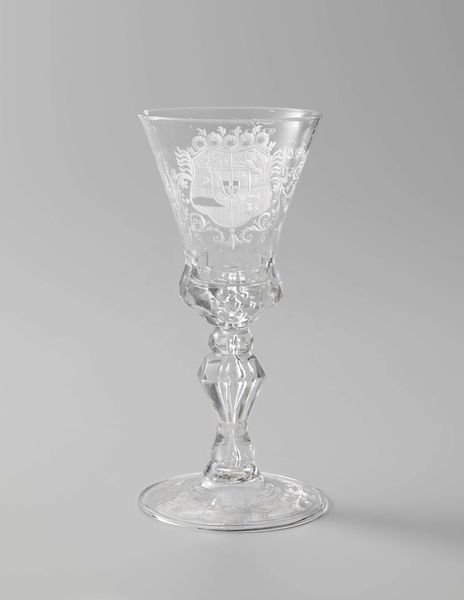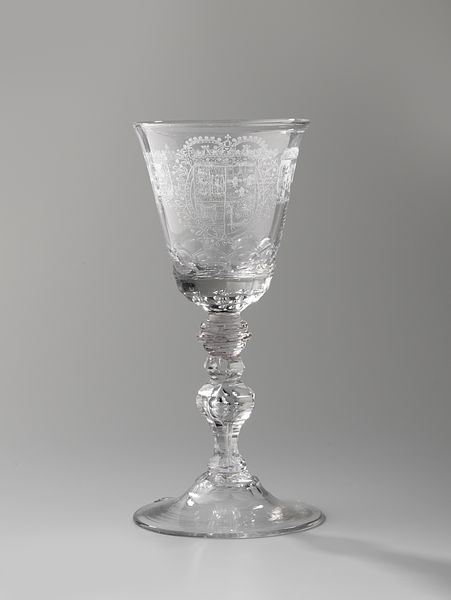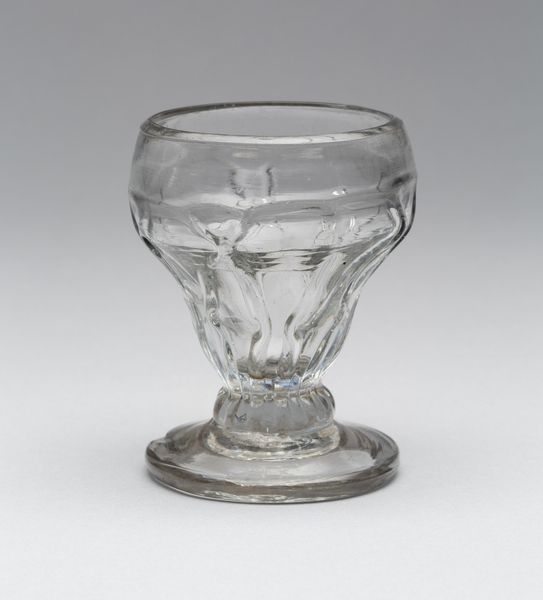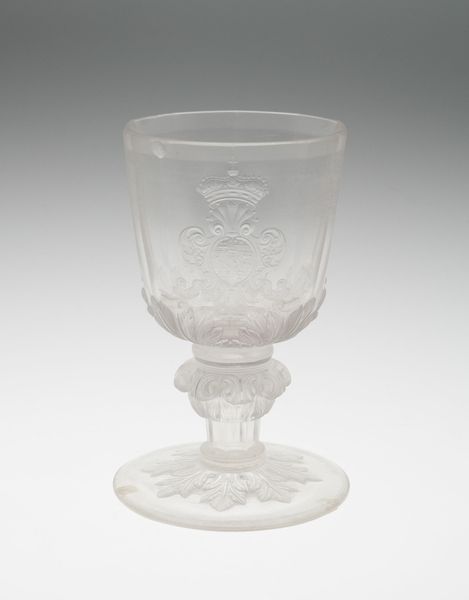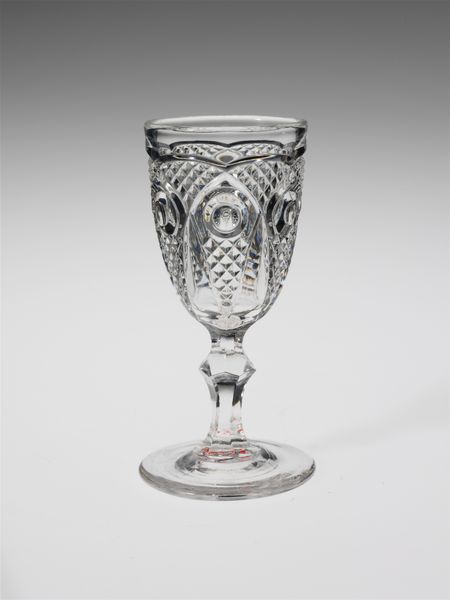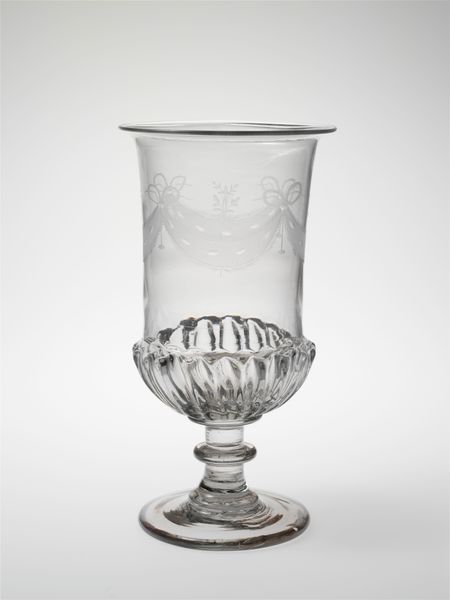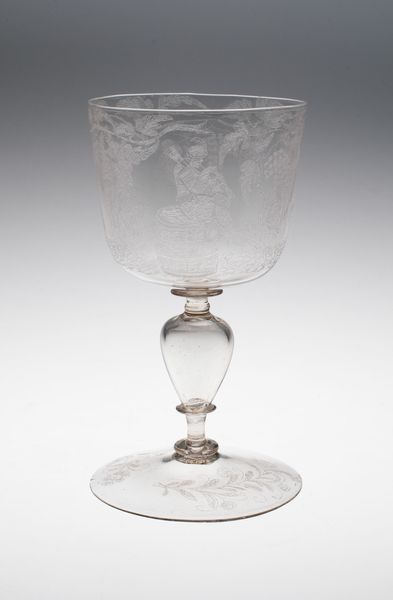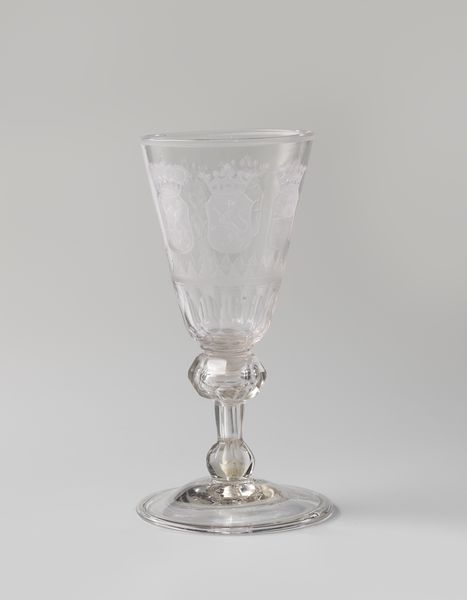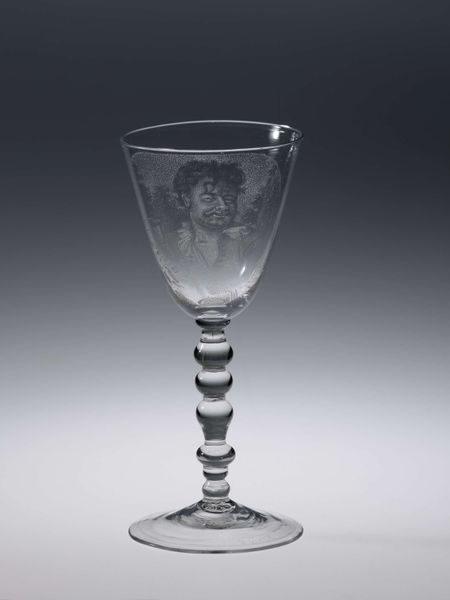
glass
#
neoclassicism
#
landscape
#
glass
#
england
#
miniature
Dimensions: 6 15/16 x 3 1/2 x 3 1/2 in. (17.62 x 8.89 x 8.89 cm)
Copyright: Public Domain
Curator: Here we have an exquisite English goblet dating back to about 1770, currently held in the collection of the Minneapolis Institute of Art. It’s attributed to William Beilby. Editor: It’s absolutely charming! So delicate, it feels like holding a daydream. The miniature scene around the rim is just captivating, isn’t it? Curator: Indeed. Notice how the Neoclassical style manifests here; the painted landscape with a shepherd, sheep, and building evokes pastoral scenes cherished during that era. The miniature artwork represents a romanticized vision of the English countryside, almost idyllic. Editor: It’s interesting, because it’s both incredibly functional and extravagantly decorative. Imagine the skill involved in applying that enamelled landscape onto glass and using a spiral thread of white enamel to adorn the stem! I wonder what kind of labor went into producing a vessel like this, and what the intended function was? A ceremonial purpose perhaps? Curator: Undoubtedly skilled hands were at work. This type of object signified status and refinement. It suggests a deliberate invocation of certain visual traditions of that era. The imagery itself reinforces hierarchies and evokes class and taste, harkening back to idealized concepts. It may have sat among silver and porcelain, reflecting privilege. Editor: I see what you mean. Yet there's something playful about its small scale, the way a bucolic fantasy is trapped in this glass, only to be consumed and disposed of… Were people as attuned to the delicate craftsmanship as they were to its social meaning? Or did the landscape operate as a subtle, psychological comfort amid aristocratic stress? Curator: Both aspects are likely true. These objects reflected aspirations and carried weight. The scenes depicted told silent stories; the iconography of the English countryside embodied specific aesthetic ideals which spoke to power. Editor: Thinking about the act of drinking, how this elaborate glass had a real connection to somebody’s daily habits, allows me to consider art from a practical, tangible angle. Curator: Exactly. That collision of art, design, utility, and status renders it an extraordinary window into the past. Editor: It adds complexity to our perception, underscoring the complex interaction between symbolism and lived experience.
